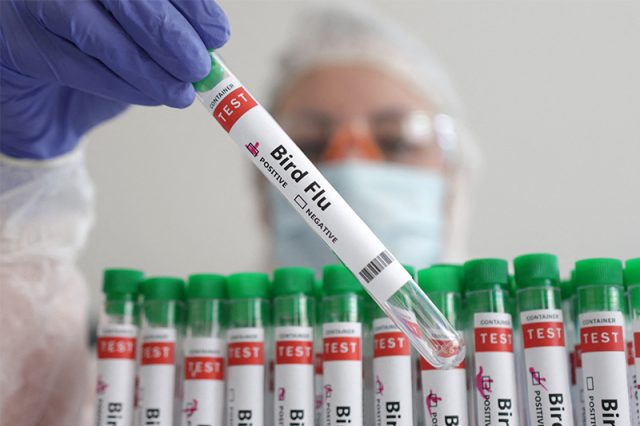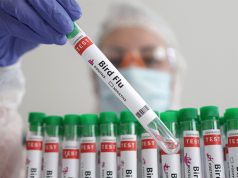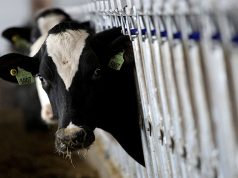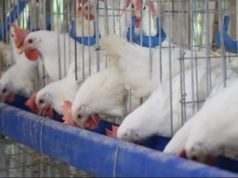
There has been an outbreak of H5N1 bird flu in Ouagadougou, Burkina Faso’s capital. The viral disease, also called avian influenza, killed 441 chickens out of a flock of 641 on a farm.
There have been several outbreaks bird flu across Africa over the past 18 years. Nigeria was the first African country to report an outbreak in February 2006.
Daniel Oluwayelu, a virologist and bird flu expert, tells us more about the disease.
What is bird flu?
Avian influenza, or bird flu, is a highly contagious viral disease of birds caused by the influenza A viruses. It was previously known as “fowl plague” and was recognised as an infectious disease of poultry in Italy as far back as 1878.
Although avian influenza A viruses occur naturally among wild aquatic birds worldwide, they are also known to infect other animals, including ducks, chickens, turkeys, pigs, whales, horses, seals, dogs and cats.
Exposure to animal influenza viruses can lead to infection and disease in humans – ranging from mild, flu-like symptoms or eye inflammation to severe, acute respiratory disease or death.
Domestic poultry may be infected with two types of bird flu viruses: highly pathogenic avian influenza (HPAI) A viruses or low pathogenic avian influenza (LPAI) A viruses. All outbreaks of the highly pathogenic form have been caused by influenza A viruses of the sub-types H5 and H7.
The highly pathogenic viruses spread quickly and may kill nearly an entire poultry flock within 48 hours. The low pathogenic viruses may not cause symptoms or may cause only mild symptoms such as ruffled feathers or a drop in egg production.
How does it spread?
Influenza A viruses circulate in their natural hosts: wild aquatic birds. Infected birds shed the bird flu virus in their saliva, mucus and faeces. Transmission or spread of the virus occurs primarily by the oral-fecal pathways through direct contact with secretions from infected birds, especially through feces or indirectly through contaminated feed and surface water.
Most bird flu viruses, including sub-types H5 and H7, are of low pathogenicity and cause sub-clinical infections of the intestinal or respiratory tract. This means they do not easily cause disease and have only mild symptoms. The virus is spread mainly through feces and droplets released during coughing and sneezing.
Highly pathogenic viruses have been proven to emerge after transmission from the wild bird reservoir and adaptation of low pathogenic virus sub-types H5 or H7 to new poultry hosts and subsequent mutation. A less dangerous virus spreads from wild birds to poultry and mutates to become more dangerous.
Low pathogenic strains result in mild or asymptomatic infections, whereas highly pathogenic strains cause up to 100% morbidity and mortality in animals.
What are the risks to humans?
Avian influenza A viruses are a public and occupational health concern. Human infection with LPAI and HPAI viruses can lead to infections and diseases in humans, ranging from mild to severe flu-like symptoms or eye inflammation to severe, acute respiratory disease and death. They may change into a form that is highly infectious in humans and spread easily from person to person.
As these viruses threaten domestic poultry globally, they are also a risk to people who have contact with poultry worldwide, including poultry farmers, farm workers, veterinarians, and sellers and butchers of chickens at live bird markets.
The virus may be transmitted to humans from contact with infected wild birds or poultry that are sick or dead, droppings of infected birds, contaminated litter, and contaminated materials or surfaces such as egg collection containers.
People rarely get bird flu; however, human infections with bird flu viruses can happen if enough virus is inhaled or gets into a person’s mouth, eyes, or nose. Bird flu infections happen most often after people have had close, prolonged and unprotected (no gloves or other personal protective equipment) contact with infected birds and then touch their mouths, eyes, or noses.
Is it preventable?
Infections with bird flu viruses are difficult to eradicate and so efforts should be made to prevent their occurrence.
The best prevention is to avoid sources of exposure. Infection of poultry flocks can be prevented by practicing biosecurity measures on farms. Biosecurity refers to steps taken to protect birds from harmful biological agents like viruses, bacteria, and parasites. In commercial poultry production, this generally means total confinement operations with strict rules to maintain flock health such as shower-in and out systems, special clothing and disinfection.
Vaccination is highly regulated and restricted in many countries, and not even approved in other countries.
People should minimize contact with birds in areas known to be affected by bird flu viruses, including farms and settings where live animals may be sold or slaughtered. They should also avoid contact with surfaces that appear to be contaminated with bird feces.
The public should be educated to avoid contact with sick or dead animals, including wild birds, and report cases of unusually high deaths of birds to veterinary authorities.
People should observe hand hygiene, preferably washing their hands thoroughly either with soap and running water or using alcohol-based hand sanitizers as frequently as possible, but especially before and after contact with animals and their environments.
How is it controlled?
Steps that can be taken to control or stop the spread of bird flu include:
- destroying birds carrying or suspected of carrying the virus
- avoiding unprotected contact with birds and bird secretions or excrement
- education of all poultry value-chain workers on the risks of the disease and personal protective measures that can be followed.

Daniel Oladimeji Oluwayelu, Professor of Veterinary Microbiology, University of Ibadan. This article is republished from The Conversation under a Creative Commons license. Read the original article.







